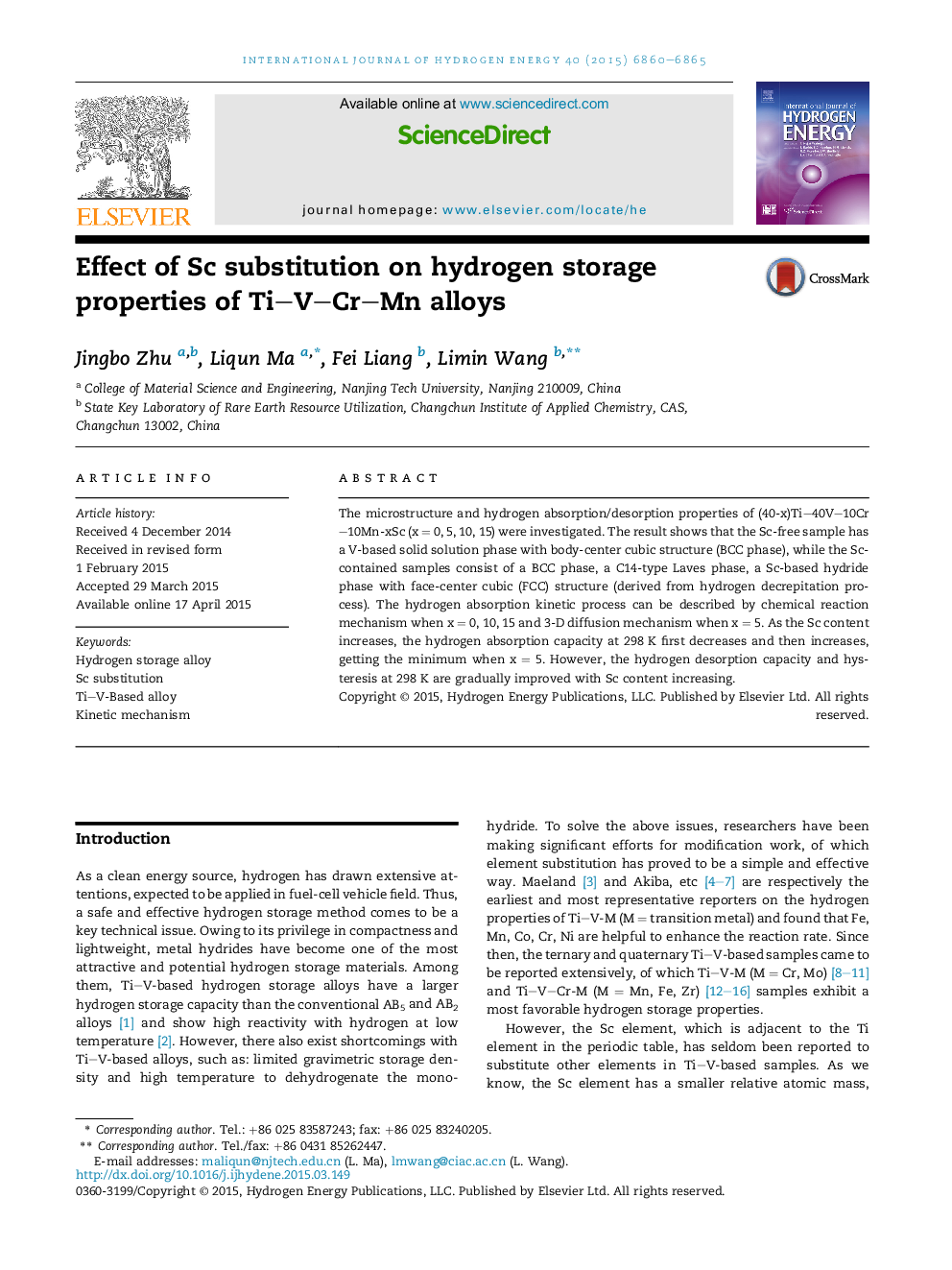| Article ID | Journal | Published Year | Pages | File Type |
|---|---|---|---|---|
| 1271198 | International Journal of Hydrogen Energy | 2015 | 6 Pages |
•Sc-substituted Ti–V–Cr–Mn system was reported for the first time.•Hydrogen desorption capacity and hysteresis at 298 K were improved by Sc substitution.•The hydrogen absorption kinetic mechanisms were illustrated.•The reason why the kinetic mechanism of Ti–40V–10Cr–10Mn-5Sc transforms to 3-D diffusion was given.•Hydrogen decrepitation process was introduced to further crush Ti–V–Cr–Mn alloys.
The microstructure and hydrogen absorption/desorption properties of (40-x)Ti–40V–10Cr–10Mn-xSc (x = 0, 5, 10, 15) were investigated. The result shows that the Sc-free sample has a V-based solid solution phase with body-center cubic structure (BCC phase), while the Sc-contained samples consist of a BCC phase, a C14-type Laves phase, a Sc-based hydride phase with face-center cubic (FCC) structure (derived from hydrogen decrepitation process). The hydrogen absorption kinetic process can be described by chemical reaction mechanism when x = 0, 10, 15 and 3-D diffusion mechanism when x = 5. As the Sc content increases, the hydrogen absorption capacity at 298 K first decreases and then increases, getting the minimum when x = 5. However, the hydrogen desorption capacity and hysteresis at 298 K are gradually improved with Sc content increasing.
Graphical abstractThe alloys of Ti–40V–10Mn–10Cr-xSc (x = 0, 5, 10, 15) were successfully prepared by arc melting method and show good activation properties.Figure optionsDownload full-size imageDownload as PowerPoint slide
